Bodegas Muelas
Walking the walls of the Cuellar castle put us behind schedule so we had to hustle several blocks from the (free) parking lot in Todesillas to make our reserved tour of the bodega. Thankfully we just missed the overview, which Clara kindly and quickly went over for us again and then we headed to the cellars for the tour with two other couples.
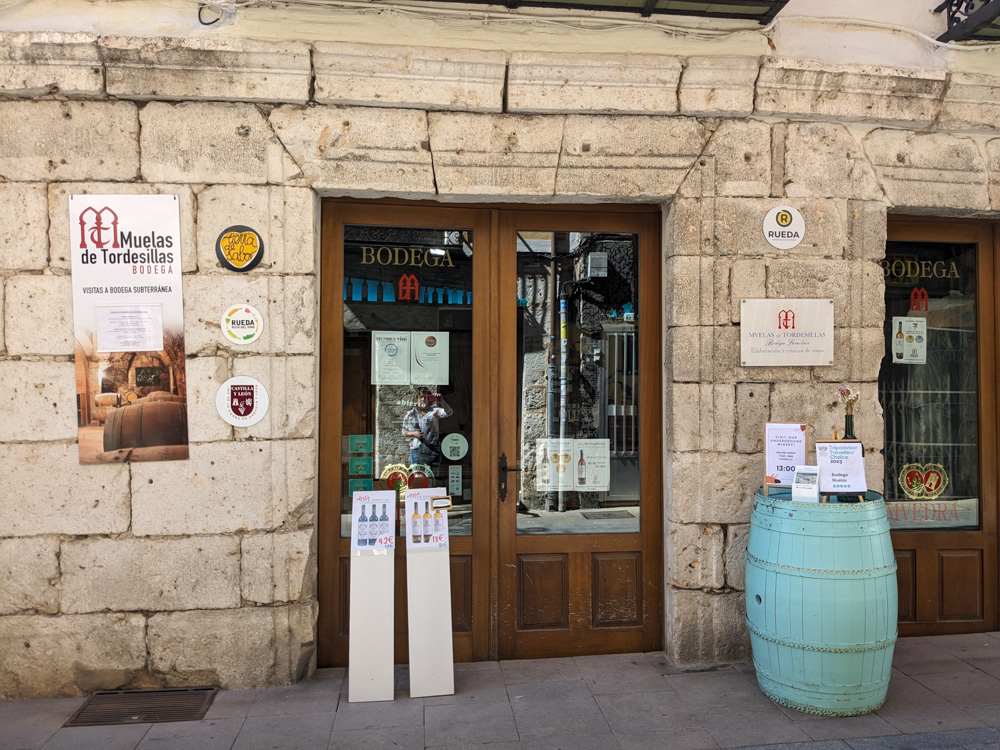
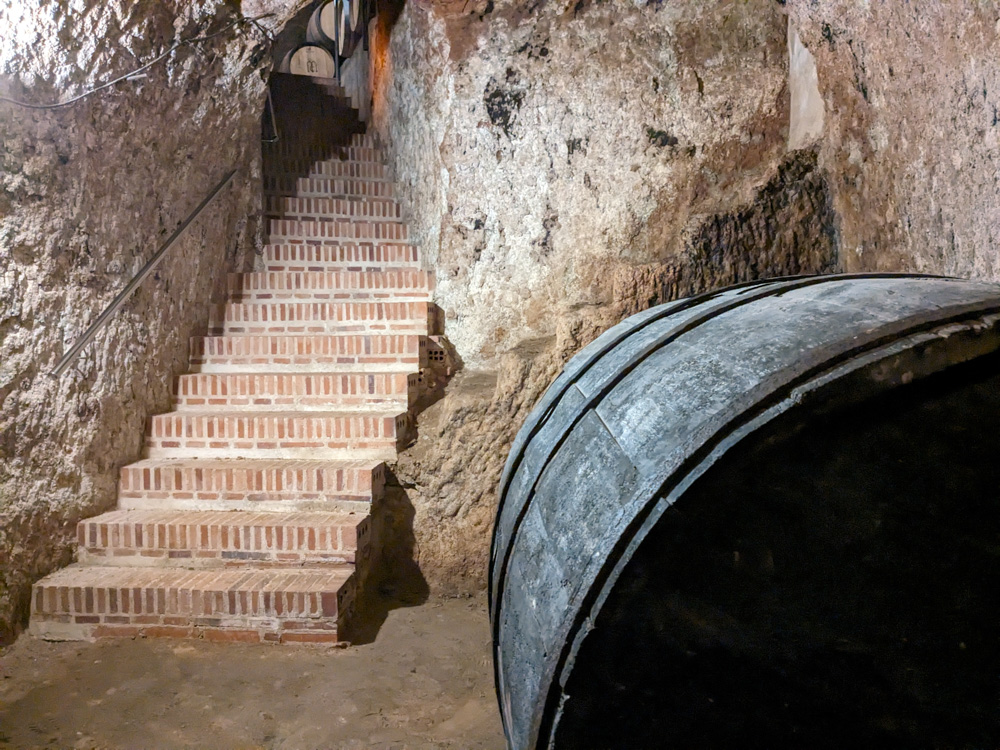
The cellars were cool and it was interesting to see how they stored wine in the center of town – especially the makeshift wine elevator and oak barrels from Missouri. Our tasting consisted of a verdejo, a rosé, a tempranillo and a semi-sweet verdejo/muscat blend. We stayed a bit past the tasting and were offered a taste of the Solera, an aged verdejo that smelled like a fortified wine but was acidic and dry tasting – very unusual!
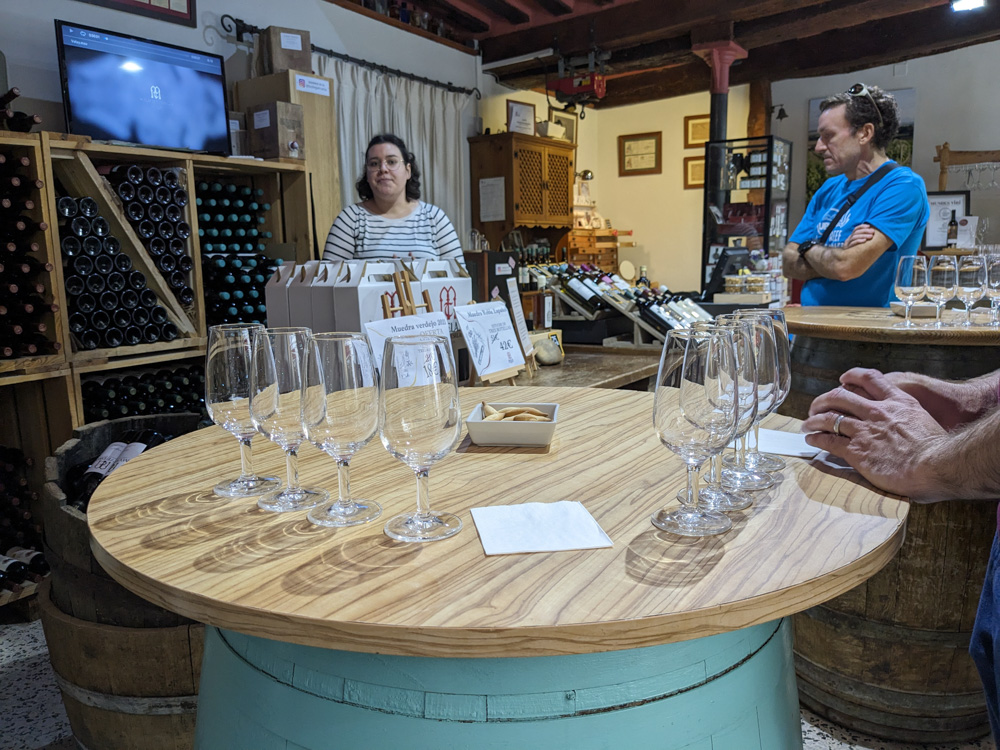
Eric’s Notes
- 2021 Mouedra verdejo – fresh, quite light, acidity a little low. Light tropical, fresh bread, white stone notes.
- Rosé – burnt sugar, a little blackberry. Surprisingly creamy, good acidity, pleasant medium body and finish. Partial malolactic fermentation.
- Crianza tempranillo – slightly burnt plum, blackberry, tobacco. Spanish oak, med strong. Long finish with some bitterness.
- Semi sweet verdejo – lots of honey, honeysuckle, some citrus blossom. Lush, long finish.
- Solera – sherry like scent, surprisingly acidic with lots of burnt sugar. Big – after dinner type wine.
Bodegas de Alberto
We arrived in Serrada and found a parking spot across the street from the tasting room – easy! Ruth was our guide for the “All You Need is Gold” tasting and the entire experience exceeded our expectations. We started out with a tour of the 17th century below ground cellars. Rows and rows of huge concrete tanks, some of which were open so we could see the actual size. She even let us have a peek in one of the barrels of the Pallida wine to see the yeast floating on top!
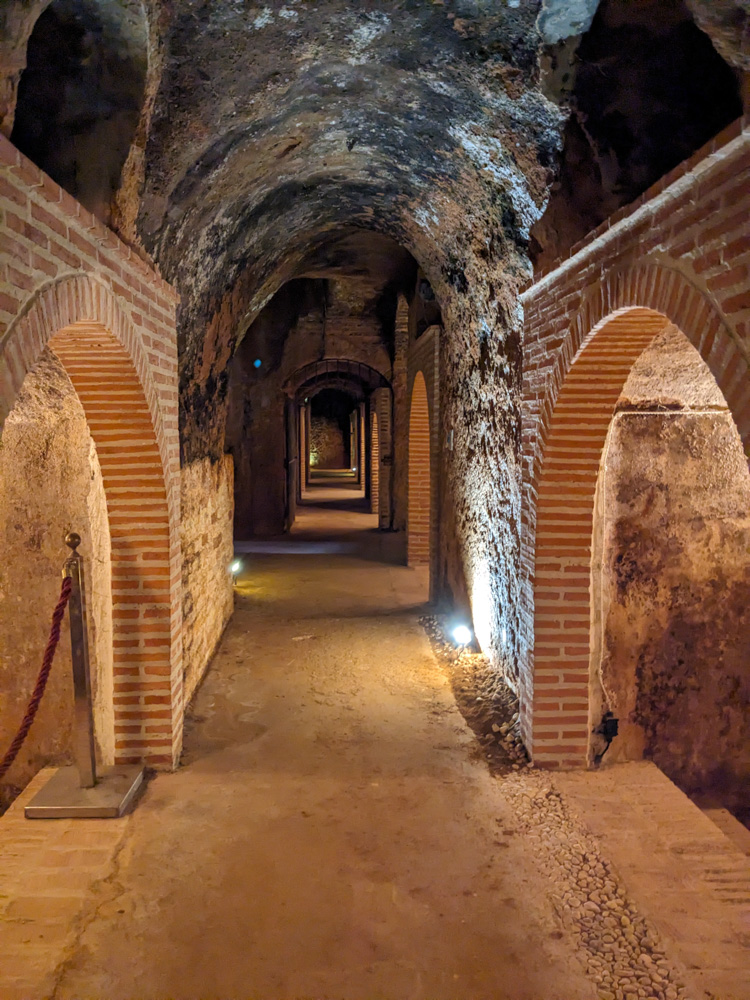
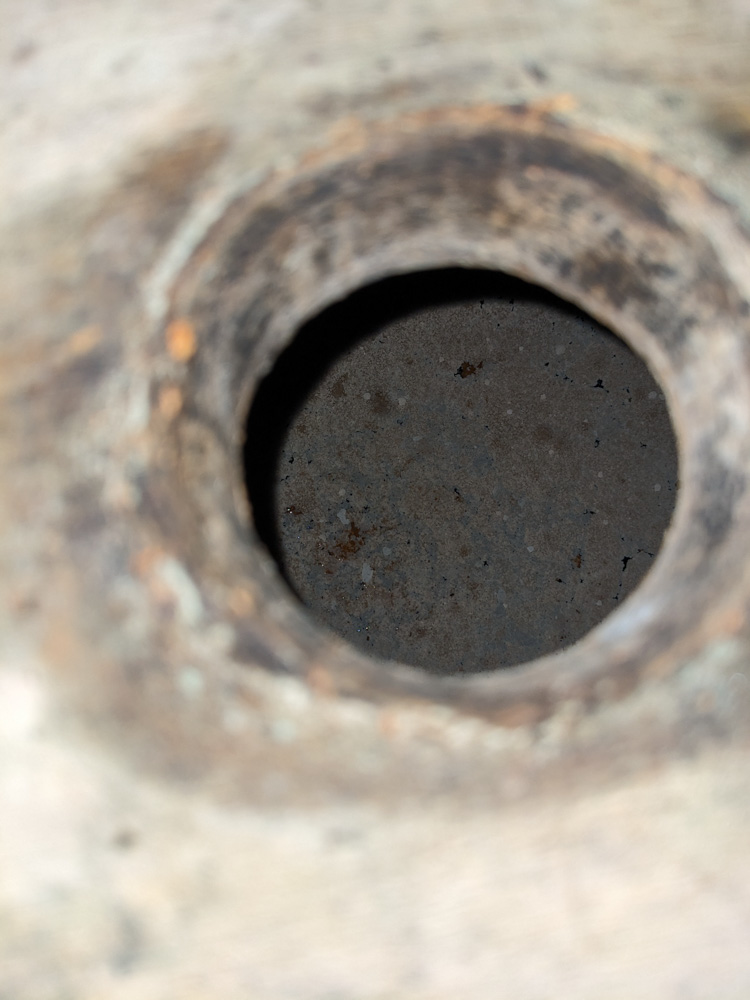
Most of their production is verdejo but they do have a red blend of tempranillo and merlot plus a rose that have the Castilla y León designation.
Next we grabbed umbrellas and walked across the street to the main facility where she showed us the destemmer and vats, but the highlight was the demijohn storage area for the Dorado wine. Each container is filled ¾ full, corked and left outside in the elements for a year. This causes the wine to oxidize which is precisely the point and completely against all rules of wine-making.


The tasting took place in the main shop and we had to work around a makeshift office situation because windows were being replaced in their offices. She poured us the first three verdejos, an ecologico, on the lees, and oak aged. We tasted through them once before she brought out a plate of meats and cheeses and she let us enjoy the wine with our snacks.


Lastly, we got to taste the famous Dorado. To show the wine’s evolution, we got a sample from the demijohns, the barrel, and then the finished product. It’s incredible the difference between the wines! The demijohn sample tasted oxidized, like it had gone bad. The middle sample had mellowed a bit with the time in oak and then the final product was completely drinkable and complex.
Eric’s Tasting Notes
- Verdejo bio – grapefruit, grass, gooseberry, lots of acidity. A little apple. Long finish.
- Verdejo lees – higher viscosity, more rounded, less grass and fruit. A little sulfur. A little sweeter with food. Needs more acidity?
- Verdejo oaked – medium-light oak, toasted notes. Lite baked apple, a little hay. Surprisingly delicate. Lasting medium light finish.
- Dorado – nose of raisin and baked pastry. Some oak. Lots of vegetal (celery), a little mint, oak, aged vinegar flavor. Like a light cognac, without the heat. Hard to believe it is verdejo.
We took home two bottles of the Dorado (regular and sweet), a bottle of the red (hopefully it’s good!) and a bottle of the verdejo bio.